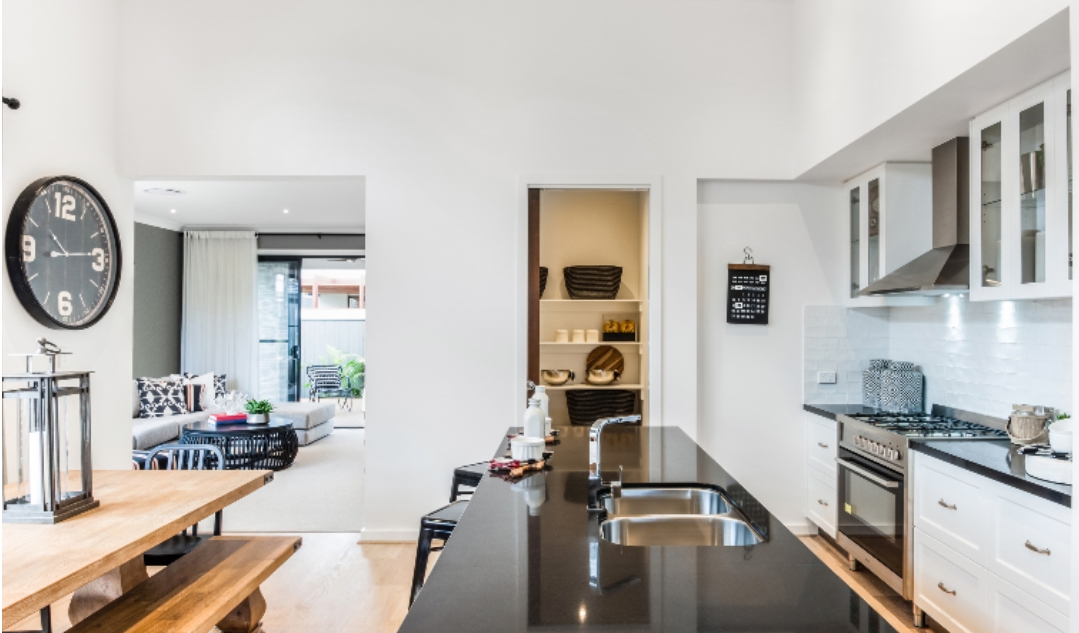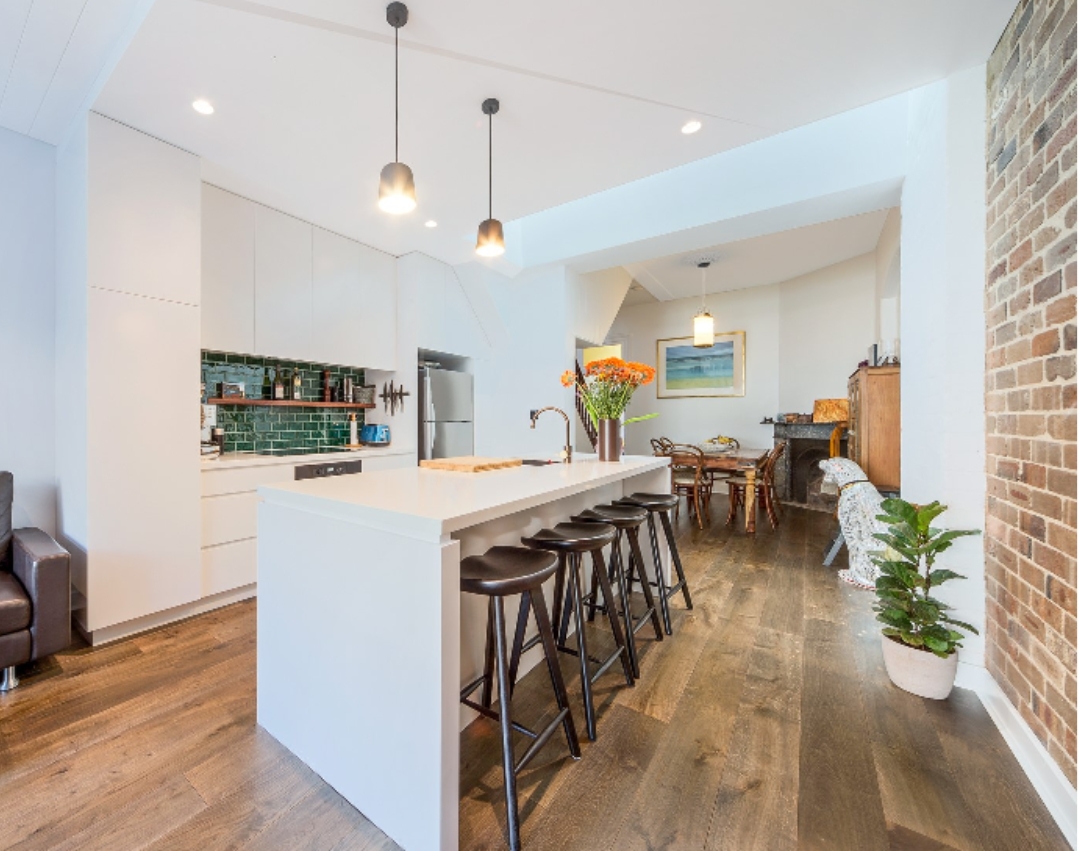I. Introduction
In today’s fast-paced world, our homes are more than just buildings; they are reflections of our personalities, lifestyles, and aspirations. Transformation of home has become increasingly vital, serving as a means to enhance our quality of life and elevate the value of our properties. From incorporating smart technology and sustainable materials to discovering new ways to maximize space and create functional yet stylish living areas, the latest trends in home remodeling are constantly changing. To stay ahead of these ever-evolving trends and create a home that truly reflects your unique lifestyle, check out the latest trends in home remodeling.

A. Brief Overview Of The Importance Of Home Transformation
Transformation of home goes beyond mere aesthetics; it encompasses the functional and emotional aspects of our living spaces. With the home being the central hub of our daily lives, its design and condition significantly impact our well-being and productivity. A well-executed transformation can breathe new life into a space, making it more comfortable, efficient, and aesthetically pleasing.
Moreover, the transformation of home holds financial implications. Whether it’s increasing the resale value of a property or reducing long-term maintenance costs through energy-efficient upgrades, investing in renovation and design can yield substantial returns. In today’s competitive real estate market, a thoughtfully transformed home stands out and attracts potential buyers or renters.
B. Introduction To The Evolving Trends In Renovation And Design
As society evolves, so do our preferences and priorities when it comes to the design and functionality of our homes. The trends in renovation and design are continuously evolving to meet the changing needs and desires of homeowners. With concerns about climate change on the rise, more homeowners are opting for environmentally conscious materials and energy-efficient technologies in their renovation projects.
Smart home technology integration is another popular trend. Modern house design has effortlessly incorporated technology, from voice-activated assistants to controlled lighting and climate control systems. These developments improve comfort and convenience while also promoting energy efficiency and home security.
II. Key Trends In Home Renovation And Design
In the dynamic landscape of home renovation and design, several key trends are shaping the way we conceptualize and transform our living spaces. From a growing emphasis on sustainability to the integration of smart home technology, these trends reflect our evolving lifestyles and priorities.
A. Sustainable And Eco-Friendly Designs
Use of Sustainable Materials
In response to growing environmental concerns, there has been a significant shift towards sustainable building materials in home renovation and design. From reclaimed wood and recycled glass to bamboo flooring and low-VOC paints, homeowners are increasingly opting for eco-friendly alternatives that minimize their carbon footprint and promote responsible consumption.
By incorporating sustainable materials into their renovation projects, homeowners not only reduce environmental impact but also create healthier indoor environments for their families. Sustainable materials are often free from harmful chemicals and toxins, making them safer and more environmentally friendly choices for home construction and renovation.
Energy-Efficient Designs and Appliances
Energy efficiency is another key consideration in modern home renovation and design. With rising energy costs and growing concerns about climate change, homeowners are seeking ways to reduce their energy consumption and carbon emissions. Energy-efficient designs, such as proper insulation, high-performance windows, and passive solar heating, can significantly reduce energy usage and utility bills.
Moreover, the integration of energy-efficient appliances, such as ENERGY STAR-rated refrigerators, dishwashers, and HVAC systems, further enhances the sustainability of a home. These appliances consume less energy while delivering the same level of performance, helping homeowners save money and reduce their environmental impact over time.
B. Open-Concept Living Spaces
Benefits and Challenges
Open-concept living spaces have become increasingly popular in modern home design, offering several benefits such as improved natural light, better flow between rooms, and enhanced social interaction. By eliminating barriers and walls, open-concept layouts create a sense of spaciousness and connectivity, making them ideal for entertaining and family gatherings.
However, open-concept designs also present challenges, such as privacy concerns and noise control issues. Without walls to delineate spaces, it can be challenging to create distinct zones for different activities or accommodate individual preferences for privacy and solitude.
Incorporating Open-Concept Designs into Different Areas of the Home
Despite these challenges, open-concept designs can be successfully incorporated into various areas of the home, including kitchens, living rooms, and dining areas. In the kitchen, an open layout allows for seamless interaction between cooking, dining, and entertaining, creating a functional and inviting space for family and guests.
Similarly, open-concept living and dining areas promote social interaction and facilitate flexible use of space, allowing homeowners to adapt the layout to their changing needs and preferences. By strategically placing furniture and using architectural elements such as half walls or columns, homeowners can create delineated zones within open-concept spaces while preserving the sense of openness and connectivity.
C. Smart Home Technology Integration
Overview of Popular Smart Home Devices and Systems
Smart home technology has revolutionized the way we interact with our living spaces, offering convenience, comfort, and security at our fingertips. From smart thermostats and lighting controls to voice-activated assistants and home security systems, there is a wide range of smart devices and systems available to homeowners looking to upgrade their homes.
Benefits of Smart Technology in Home Renovation
The integration of smart home technology offers several benefits in home renovation, including increased energy efficiency, enhanced security, and improved convenience. Smart thermostats, for example, can learn homeowners’ preferences and adjust temperature settings accordingly, optimizing energy usage and reducing utility bills.
Similarly, smart lighting controls allow homeowners to remotely adjust lighting levels and schedules, saving energy and creating ambiance tailored to different activities and moods. Additionally, smart home security systems provide peace of mind by allowing homeowners to monitor and control their homes remotely, deter intruders, and receive instant alerts in case of emergencies.

III. Conclusion
Home renovations and design projects have the power to completely transform a living space. It is a journey of self-discovery, creativity, and innovation, where homeowners have the opportunity to shape their living spaces according to their unique vision and aspirations. From the initial planning stages to the final touches, every decision and detail contributes to the creation of a space that reflects the personality, lifestyle, and needs of its occupants. With helpful tips and step-by-step guides, you can confidently embark on your own home transformation journey and create a space that you’ll love to live in.
Frequently Asked Questions (FAQ)
Q: What are some key trends in home renovation and design?
A: Some key trends include sustainable and eco-friendly designs, open-concept living spaces, integration of smart home technology, and minimalist aesthetics.
Q: How can I incorporate the latest trends into my home without overwhelming the space?
A: Start by selecting one or two trends that align with your personal style and focus on integrating them thoughtfully. Consider elements like color schemes, materials, and furniture pieces that complement each other.
Q: What should I consider when setting a budget for my transformation project?
A: Factor in costs for materials, labor, permits, and unexpected expenses. Prioritize renovations based on your budget and goals, and be sure to leave room for contingencies.
Q: How do I find the right professionals to help with my home renovation?
A: Ask for recommendations from friends and family, research online reviews, and interview multiple professionals to find the best fit for your project. Look for experienced professionals who understand your vision and budget constraints.
Q: What are some common challenges I might face during a transformation project?
A: Common challenges include unexpected issues during renovation, decision fatigue, and managing stress. Stay organized, communicate effectively with your team, and be prepared to adapt to changes as they arise.

